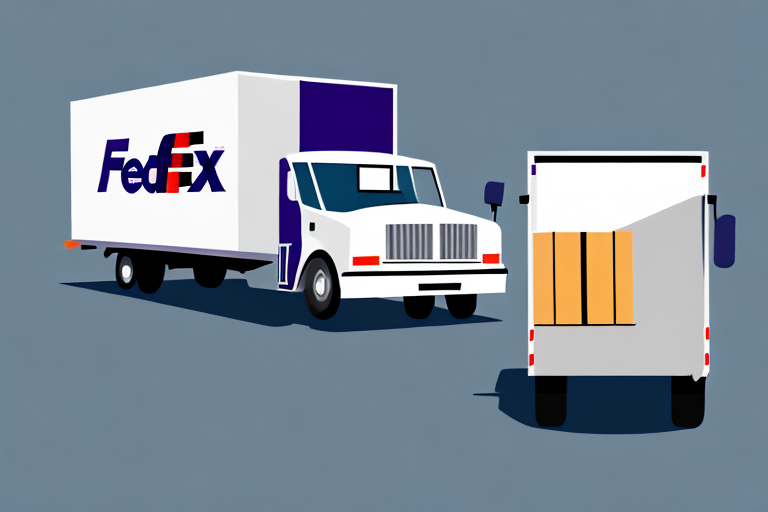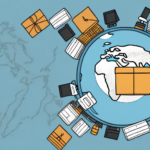What Is a Delivery Exception? Understanding the Basics
Have you ever received a notification that your package has encountered a delivery exception? If you have, you are not alone. Delivery exceptions are a common occurrence in the shipping world. Understanding what a delivery exception is and why they happen can help you prevent them from occurring in the future. In this article, we will explore the basics of delivery exceptions, including common types, causes, and ways to prevent and resolve them.
Common Types of Delivery Exceptions and Their Causes
Delivery exceptions come in various forms. Some of the most common include:
- Damaged Package: Occurs when the package is mishandled during transportation or when equipment like forklifts damage it at the warehouse.
- Incorrect Address: Happens when the address on the package label is incorrect, making it impossible to deliver to the intended recipient.
- Missed Delivery: Usually occurs when the recipient is not present at the time of delivery.
- Weather Delays: Happens when the package cannot be delivered due to extreme weather conditions.
- Customs Issues: Involves delays caused by customs clearance, import restrictions, or other regulatory requirements.
Delivery exceptions can also arise from issues with customs clearance, import restrictions, and other regulatory requirements. These types of exceptions can cause delays in delivery and may require additional documentation or fees to resolve. It is crucial for both the sender and recipient to be aware of any potential customs or regulatory issues when shipping internationally to avoid unexpected delivery exceptions.
How to Track and Monitor Delivery Exceptions
When a delivery exception occurs, it is essential to know that the package is secure and being monitored. Most shipping carriers offer tracking services that allow you to monitor your package at all stages of delivery. Utilizing these services helps you stay informed about any exceptions and take the necessary steps to resolve them. Tracking options typically include online portals, email notifications, and text message alerts.
Understanding the different types of delivery exceptions is also important. Some common exceptions include weather delays, incorrect addresses, and package damage. By identifying the specific exception, you can take appropriate action to resolve the issue and ensure that your package is delivered on time and in good condition.
Additionally, communicating directly with the shipping carrier can provide updates on your package’s status and help navigate any delivery exceptions that may arise.
Preventing Delivery Exceptions: Tips for Shippers and Receivers
While delivery exceptions are not always preventable, there are steps you can take to reduce their likelihood:
- Double-check the address on your package before sending it.
- Ensure your package is securely packaged to avoid damages or breakages.
- Provide the recipient's contact information to the shipper for notification in case of delivery issues.
- Ensure someone is available to receive the package at the delivery location.
- Avoid shipping packages during extreme weather conditions.
Tracking your package is another important step. Most shipping companies offer tracking services that allow you to monitor the progress of your package and receive notifications about any delivery exceptions. This proactive approach helps you take quick action to prevent further issues.
Effective communication with your recipient is also vital. Inform them of the expected delivery date and provide necessary information, such as a tracking number or specific delivery instructions, to ensure they are prepared to receive the package.
What Happens When a Delivery Exception Occurs?
When a delivery exception occurs, the shipping carrier will attempt to resolve the issue as soon as possible. The course of action depends on the type of exception encountered:
- If the package is undeliverable, it may be returned to the warehouse, and the sender will be notified.
- The carrier may attempt to redeliver the package on the next available delivery date.
- If the package is too damaged to be delivered, the carrier may initiate a claim with the shipper's insurance provider.
Delivery exceptions can cause delays in the delivery of your package. If the carrier cannot resolve the issue quickly, it may take longer than expected for your package to arrive. In some cases, the carrier may require additional information or documentation from the sender or recipient to resolve the issue.
To avoid delivery exceptions, ensure that the shipping address is accurate and complete, and that someone is available to receive the package at the delivery address. Regularly tracking your package can also help you stay informed about any issues that may arise during the delivery process.
How to Resolve a Delivery Exception and Get Your Package Delivered
To resolve a delivery exception, it is important to identify the cause of the issue. Once you understand the reason behind the exception, you can take the appropriate steps to resolve it. Common resolution methods include:
- Contacting the shipping carrier to arrange redelivery or redirection of the package.
- Providing the correct address information.
- Filing an insurance claim with your shipping carrier if the package was damaged in transit.
Delivery exceptions related to customs or import regulations may require additional documentation or payment of fees to ensure successful delivery. Researching the specific regulations of the destination country before shipping can help avoid these potential issues.
Impact of Delivery Exceptions on E-Commerce Businesses
Delivery exceptions can significantly impact e-commerce businesses. When packages are not delivered on time, it can lead to lost sales and unhappy customers. Customers may choose to take their business elsewhere, and refunds may need to be issued. For businesses that rely on shipping for inventory management, delivery exceptions can disrupt the entire supply chain, leading to a loss of productivity and revenue.
Legal Implications of Delivery Exceptions: Who Is Liable?
When a delivery exception occurs, questions may arise regarding who is responsible for the package and any damages that occurred. The answer is not always clear-cut and depends on the terms agreed upon between the shipper and the carrier. Typically:
- If the package was damaged in transit, the shipping carrier may be liable.
- If the package cannot be delivered due to incorrect address information or the recipient being unavailable, the sender may be liable.
It is always best to consult with legal professionals to determine liability in specific cases.
Best Practices for Dealing with Common Delivery Exception Scenarios
Dealing with a delivery exception can be stressful, but having a plan in place can simplify the process. Here are some best practices:
- Stay informed by tracking your package throughout the shipping process.
- Contact the shipping carrier immediately if you notice any issues or anticipate delivery problems.
- Provide accurate and up-to-date address information.
- Sign up for text message or email notifications for real-time updates.
The Role of Technology in Reducing Delivery Exceptions
Advancements in technology have led to the development of new solutions to track and monitor delivery exceptions. Examples include:
- GPS Tracking: Allows for real-time location tracking of packages.
- Temperature-Sensitive Notifications: Alerts for packages that require specific temperature conditions.
- Integrated Tracking Solutions: E-commerce platforms can integrate tracking systems that provide real-time updates to customers, improving the overall customer experience and reducing shipment exceptions.
These technologies help mitigate exceptions in supply chains by providing more accurate and timely information, allowing for quicker resolutions.
Top Strategies for Minimizing Delivery Exceptions in Your Supply Chain
Whether you are a shipper or receiver, implementing the following strategies can help minimize delivery exceptions:
- Invest in high-quality packaging materials that can withstand shipping and handling stresses.
- Review and verify all address information before shipping any packages.
- Use a reputable shipping carrier that offers real-time monitoring and tracking services.
- Ensure the recipient's contact information is provided to the shipping carrier for efficient delivery notifications.
How to Communicate Effectively with Your Carrier When Faced with a Delivery Exception
Effective communication with your shipping carrier is key when dealing with a delivery exception. Here are some tips:
- Be Polite and Courteous: Maintaining a respectful tone can facilitate better assistance.
- Provide Accurate Information: Clearly explain the exception encountered with detailed information.
- Request Realistic Timelines: Ask for updated delivery timelines and information.
- Document Conversations: Keep records of all communications for future reference.
Understanding the Differences Between a Failed Delivery Attempt and a Delivery Exception
A failed delivery attempt occurs when the shipping carrier tries to deliver a package but is unable to do so. Reasons may include an incorrect address, an absent recipient, or an issue with the delivery location.
A delivery exception encompasses a broader range of issues that prevent the successful delivery of a package, including damaged packages, weather delays, and customs issues, among others.
Understanding these distinctions can help you address each situation appropriately and take the necessary steps to ensure successful delivery.
Why Tracking and Reporting on Delivery Exceptions Is Critical for Your Business Success
Tracking and reporting on delivery exceptions are critical for business success in several ways:
- Identify Common Issues: By tracking exceptions, businesses can identify recurring problems and implement measures to prevent them.
- Optimize Supply Chains: Data on delivery exceptions can help companies develop more efficient supply chains.
- Improve Customer Experience: Understanding and addressing delivery issues promptly can enhance customer satisfaction.
- Cost Optimization: Identifying delivery exceptions can help businesses allocate resources more effectively and reduce associated costs.
- Strengthen Carrier Relationships: Tracking exceptions can lead to better communication and partnerships with shipping carriers.
Effective tracking and reporting enable businesses to make informed decisions that enhance operational efficiency and customer satisfaction.
A Guide to Handling International Shipping and Customs-Related Delivery Exceptions
International shipping and customs-related issues can be particularly challenging. Here are some tips to handle these types of delivery exceptions:
- Understand the import and export regulations in the destination country to ensure compliance.
- Provide accurate customs information to the shipping carrier to facilitate smooth clearance.
- Allow additional time for shipping internationally to account for customs processing.
- Be prepared to pay customs fees and taxes to avoid delays in delivery.
Proper preparation and understanding of international shipping requirements can significantly reduce the likelihood of customs-related delivery exceptions.
In conclusion, delivery exceptions are a common occurrence in the shipping industry. While they can be challenging, implementing best practices, effective communication, and utilizing technology can help reduce their frequency. Ultimately, tracking and reporting on delivery exceptions can lead to more efficient supply chains, reduced costs, and improved customer experience.




















